-
 Bitcoin
Bitcoin $108,017.2353
-0.81% -
 Ethereum
Ethereum $2,512.4118
-1.58% -
 Tether USDt
Tether USDt $1.0002
-0.03% -
 XRP
XRP $2.2174
-1.03% -
 BNB
BNB $654.8304
-0.79% -
 Solana
Solana $147.9384
-1.76% -
 USDC
USDC $1.0000
-0.01% -
 TRON
TRON $0.2841
-0.76% -
 Dogecoin
Dogecoin $0.1636
-2.09% -
 Cardano
Cardano $0.5726
-1.72% -
 Hyperliquid
Hyperliquid $39.1934
1.09% -
 Sui
Sui $2.9091
-0.59% -
 Bitcoin Cash
Bitcoin Cash $482.1305
0.00% -
 Chainlink
Chainlink $13.1729
-1.54% -
 UNUS SED LEO
UNUS SED LEO $9.0243
-0.18% -
 Avalanche
Avalanche $17.8018
-1.90% -
 Stellar
Stellar $0.2363
-1.69% -
 Toncoin
Toncoin $2.7388
-3.03% -
 Shiba Inu
Shiba Inu $0.0...01141
-1.71% -
 Litecoin
Litecoin $86.3646
-1.98% -
 Hedera
Hedera $0.1546
-0.80% -
 Monero
Monero $311.8554
-1.96% -
 Dai
Dai $1.0000
-0.01% -
 Polkadot
Polkadot $3.3473
-2.69% -
 Ethena USDe
Ethena USDe $1.0001
-0.01% -
 Bitget Token
Bitget Token $4.3982
-1.56% -
 Uniswap
Uniswap $6.9541
-5.35% -
 Aave
Aave $271.7716
0.96% -
 Pepe
Pepe $0.0...09662
-1.44% -
 Pi
Pi $0.4609
-4.93%
Does the 30-minute volume increase in the last trading session indicate a rise the next day?
A surge in crypto trading volume during the last 30 minutes may signal institutional activity or reaction to news, potentially influencing next-day price momentum, but it’s not a guaranteed predictor.
Jul 05, 2025 at 07:17 pm
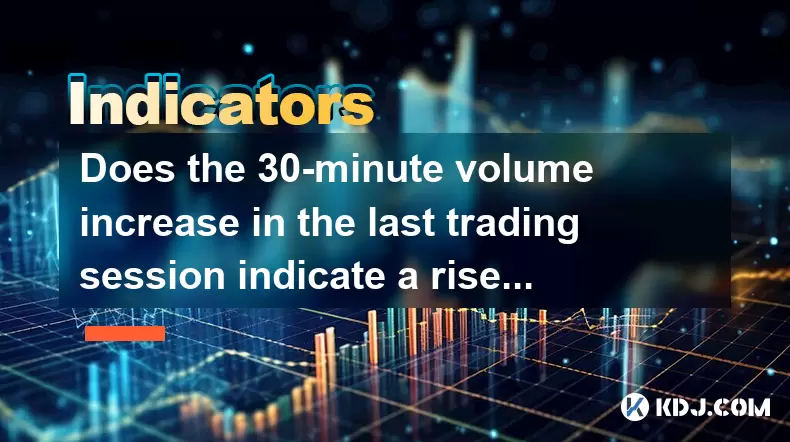
Understanding the 30-Minute Volume Surge
In the world of cryptocurrency trading, volume is often considered a key indicator of market sentiment. A significant increase in trading volume during the last 30 minutes of a trading session can raise questions about its implications for the following day’s price movement. This phenomenon is frequently observed on platforms like Binance, Coinbase, and Kraken, where traders engage in high-frequency transactions.
A surge in volume at the close typically reflects increased interest from institutional or algorithmic traders who may be adjusting positions before the end of the trading period. While this does not guarantee a specific outcome for the next day, it often signals that market participants are actively responding to recent information or events that could influence prices.
Historical Patterns and Statistical Relevance
Analyzing historical data reveals that a sudden rise in volume near the close can sometimes precede a continuation of the current trend. For instance, if a cryptocurrency ends the day with a strong bullish candle accompanied by elevated volume, it might indicate that buyers were more aggressive during the final moments of trading. In such cases, the likelihood of upward momentum continuing into the next session increases, although not consistently.
Conversely, if the volume spike occurs during a bearish close, it could signal panic selling or profit-taking, which might lead to further downside pressure the following day. However, these patterns are not foolproof and should always be analyzed alongside other technical indicators such as moving averages, RSI, and MACD.
Correlation vs. Causation in Crypto Markets
It's crucial to distinguish between correlation and causation when interpreting volume spikes. A surge in the final 30 minutes of trading may coincide with price movements the next day, but that doesn’t mean one causes the other. The crypto market is influenced by numerous external factors including macroeconomic news, regulatory developments, and global events.
For example, a sharp volume increase late in the session might occur due to an unexpected tweet from a prominent figure in the space, a major exchange announcement, or a shift in broader financial markets. These catalysts can independently affect the next day’s price action, making it difficult to attribute movement solely to the volume surge itself.
How Retail Traders Can Interpret Late-Session Volume Spikes
Retail traders often look for signs of strength or weakness in the market. When they observe a notable increase in volume during the last 30 minutes, they may consider several scenarios:
- Breakout Potential: If the volume coincides with a breakout above resistance or below support levels, it may suggest that the new trend has significant backing.
- FOMO (Fear of Missing Out): Sudden buying pressure at the close can trigger FOMO among retail investors, leading to a gap-up or gap-down in the next session.
- Market Manipulation: Some traders suspect that whales or large players may inflate volume artificially near the close to mislead smaller traders into making emotional decisions.
Traders should also pay attention to order book depth and liquidity levels during these surges to determine whether the volume represents genuine interest or wash trading.
Technical Tools to Validate Post-Volume Price Action
To make informed decisions based on late-session volume spikes, traders can use various tools and strategies:
- Volume Profile: Analyze where most of the trading activity occurred throughout the day. If the majority of volume was concentrated near the close, it might indicate strategic positioning by larger players.
- Candlestick Analysis: Look at the shape and location of the closing candle. A long upper wick with high volume may suggest rejection at higher levels, while a strong bullish close with volume could imply continued buying pressure.
- Order Flow Indicators: Tools like Depth of Market (DOM) or Time & Sales can provide insights into whether the volume came from buy or sell orders, helping to assess real market intent.
Using these tools in conjunction with volume analysis can help traders better interpret what the final 30 minutes of trading may signify for the next session.
Common Misinterpretations and Pitfalls
One common mistake is assuming that a late-volume surge automatically translates into the next day’s direction. The crypto market is known for its volatility and unpredictability. There are many instances where a high-volume close is followed by consolidation or even reversal, especially if there’s no fundamental catalyst supporting the move.
Additionally, time zones play a role in how volume is distributed across sessions. A surge in Asian trading hours may have a different impact than one occurring during European or U.S. sessions. Therefore, traders must contextualize volume changes within the broader framework of global market activity.
Frequently Asked Questions
Q: Does a high volume at the close always mean the price will continue in the same direction the next day?
No, while a high volume at the close can suggest momentum, it doesn't guarantee that the price will follow through the next day. Other factors like news, sentiment shifts, and macroeconomic events can override technical signals.
Q: How can I differentiate between organic volume and manipulated volume?
Organic volume typically aligns with real order flow and appears in tandem with clear price movements. Manipulated volume may show erratic spikes without corresponding price changes or appear during low-liquidity periods. Checking order book data and trade history can help identify anomalies.
Q: Should I place trades immediately after observing a volume surge in the last 30 minutes?
This depends on your strategy. Aggressive traders might enter early, while conservative ones may wait for confirmation in the next session. Always set stop-losses and avoid over-leveraging based solely on volume indicators.
Q: Is the 30-minute volume increase more significant on certain exchanges?
Yes, exchanges with higher liquidity and transparency, such as Binance or Coinbase, tend to offer more reliable volume data. Smaller exchanges may exhibit less accurate or easily manipulatable volume metrics.
Disclaimer:info@kdj.com
The information provided is not trading advice. kdj.com does not assume any responsibility for any investments made based on the information provided in this article. Cryptocurrencies are highly volatile and it is highly recommended that you invest with caution after thorough research!
If you believe that the content used on this website infringes your copyright, please contact us immediately (info@kdj.com) and we will delete it promptly.
- Bitcoin, Kiyosaki, and Acquisition: A Perfect Storm?
- 2025-07-05 22:35:14
- Cardano vs. Solana: The $500 Dream and a Payments Disruptor
- 2025-07-05 22:50:13
- Subway Surfers on PC: Level Up Your Experience, No Train Ticket Needed!
- 2025-07-05 22:35:14
- Ray Dalio, Bitcoin, and Disruptions: Navigating the Future of Finance
- 2025-07-05 23:10:13
- Yu Darvish's Padres Return: A Coin Flip?
- 2025-07-05 22:50:13
- Undead Blocks Rises Again: Avalanche Blockchain, Blackhole Partnership, and a Roadmap to 2026
- 2025-07-05 22:55:12
Related knowledge

How to set up a moving average crossover alert for Dogecoin
Jul 05,2025 at 07:33pm
Understanding Moving Averages and Their Relevance to DogecoinMoving averages (MAs) are among the most commonly used technical indicators in cryptocurrency trading. They help smooth out price data over a specific time period, offering traders a clearer view of trends. Dogecoin, being a highly volatile altcoin, often exhibits strong momentum when certain ...
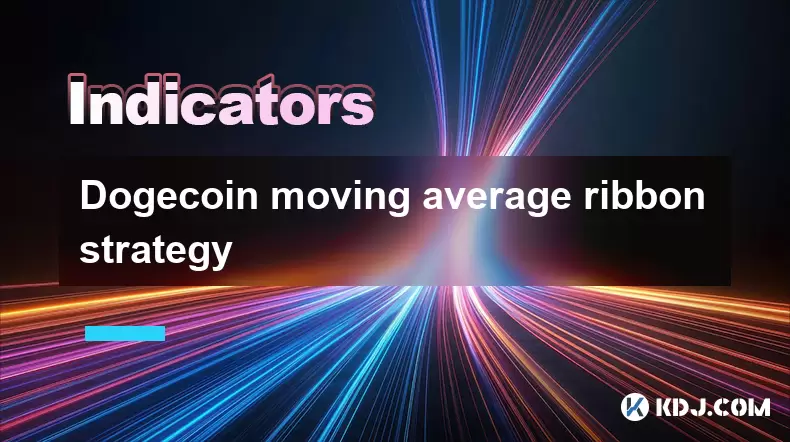
Dogecoin moving average ribbon strategy
Jul 05,2025 at 07:32pm
What is the Dogecoin Moving Average Ribbon Strategy?The Dogecoin moving average ribbon strategy is a technical analysis approach used by traders to identify potential trends and reversals in the price of DOGE. This method involves plotting multiple moving averages (MAs) on a price chart, typically of varying lengths, which visually form a 'ribbon' when ...
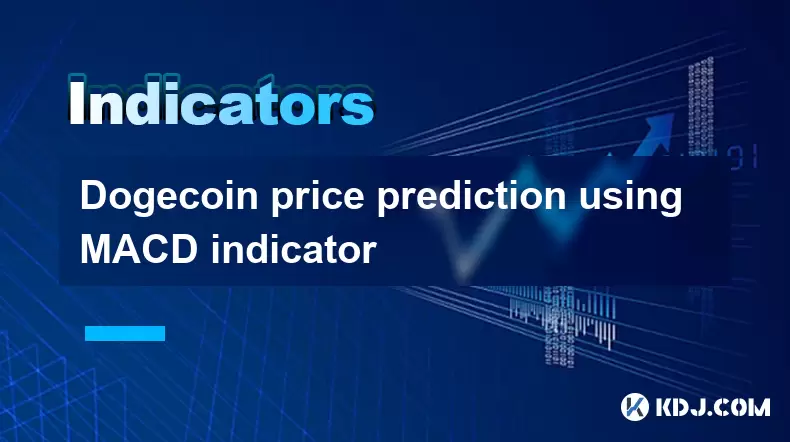
Dogecoin price prediction using MACD indicator
Jul 05,2025 at 07:18pm
Understanding the MACD Indicator in Cryptocurrency TradingThe Moving Average Convergence Divergence (MACD) is a popular technical analysis tool used by traders to identify potential price trends and reversals. It consists of three main components: the MACD line, the signal line, and the MACD histogram. The MACD line is calculated by subtracting the 26-p...
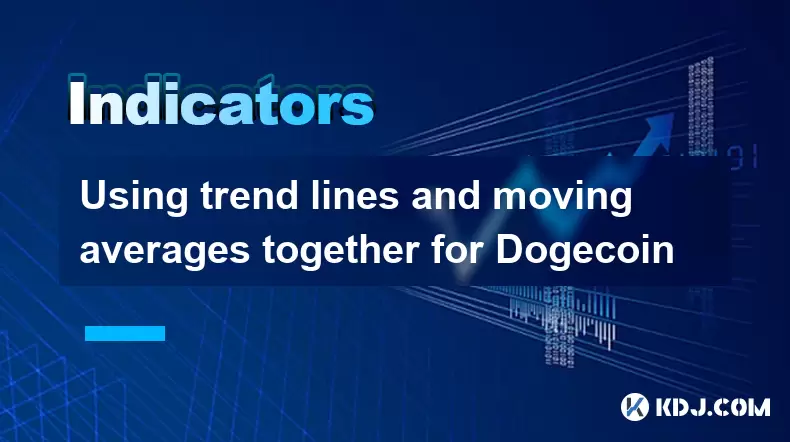
Using trend lines and moving averages together for Dogecoin
Jul 05,2025 at 07:16pm
Understanding Trend Lines in Cryptocurrency TradingTrend lines are essential tools for analyzing price movements in the cryptocurrency market. In Dogecoin trading, trend lines help identify potential support and resistance levels by connecting significant price points on a chart. When applied correctly, these lines can indicate whether the asset is in a...
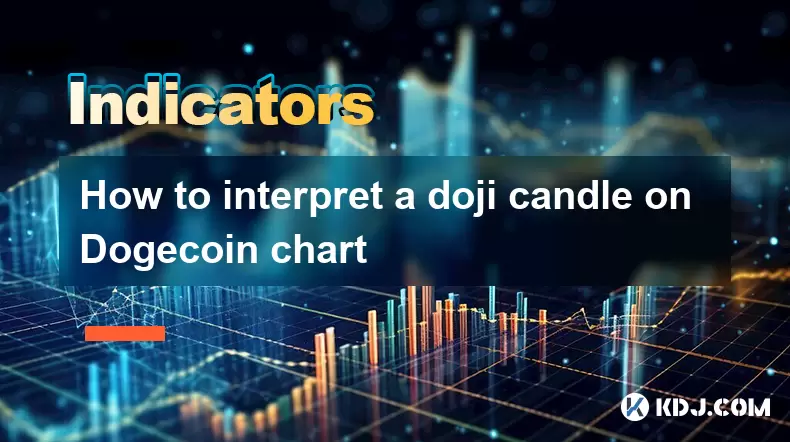
How to interpret a doji candle on Dogecoin chart
Jul 05,2025 at 07:49pm
Understanding the Doji Candlestick PatternA doji candle is a crucial technical indicator in cryptocurrency trading, especially when analyzing assets like Dogecoin. It represents market indecision and often signals potential reversals or continuation patterns. A doji forms when the opening and closing prices of an asset are nearly identical, resulting in...
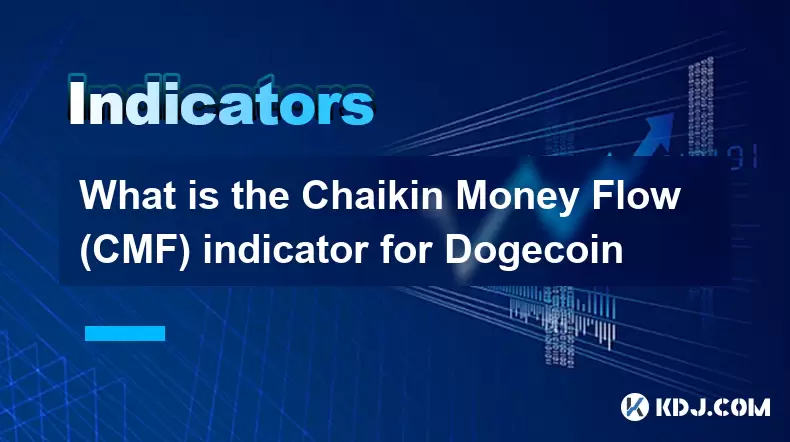
What is the Chaikin Money Flow (CMF) indicator for Dogecoin
Jul 05,2025 at 07:32pm
Understanding the Chaikin Money Flow (CMF) IndicatorThe Chaikin Money Flow (CMF) is a technical analysis indicator developed by Marc Chaikin to measure the accumulation and distribution of a financial asset over a specific period. It combines both price and volume data to assess whether institutional investors are actively buying or selling an asset. In...

How to set up a moving average crossover alert for Dogecoin
Jul 05,2025 at 07:33pm
Understanding Moving Averages and Their Relevance to DogecoinMoving averages (MAs) are among the most commonly used technical indicators in cryptocurrency trading. They help smooth out price data over a specific time period, offering traders a clearer view of trends. Dogecoin, being a highly volatile altcoin, often exhibits strong momentum when certain ...

Dogecoin moving average ribbon strategy
Jul 05,2025 at 07:32pm
What is the Dogecoin Moving Average Ribbon Strategy?The Dogecoin moving average ribbon strategy is a technical analysis approach used by traders to identify potential trends and reversals in the price of DOGE. This method involves plotting multiple moving averages (MAs) on a price chart, typically of varying lengths, which visually form a 'ribbon' when ...

Dogecoin price prediction using MACD indicator
Jul 05,2025 at 07:18pm
Understanding the MACD Indicator in Cryptocurrency TradingThe Moving Average Convergence Divergence (MACD) is a popular technical analysis tool used by traders to identify potential price trends and reversals. It consists of three main components: the MACD line, the signal line, and the MACD histogram. The MACD line is calculated by subtracting the 26-p...

Using trend lines and moving averages together for Dogecoin
Jul 05,2025 at 07:16pm
Understanding Trend Lines in Cryptocurrency TradingTrend lines are essential tools for analyzing price movements in the cryptocurrency market. In Dogecoin trading, trend lines help identify potential support and resistance levels by connecting significant price points on a chart. When applied correctly, these lines can indicate whether the asset is in a...

How to interpret a doji candle on Dogecoin chart
Jul 05,2025 at 07:49pm
Understanding the Doji Candlestick PatternA doji candle is a crucial technical indicator in cryptocurrency trading, especially when analyzing assets like Dogecoin. It represents market indecision and often signals potential reversals or continuation patterns. A doji forms when the opening and closing prices of an asset are nearly identical, resulting in...

What is the Chaikin Money Flow (CMF) indicator for Dogecoin
Jul 05,2025 at 07:32pm
Understanding the Chaikin Money Flow (CMF) IndicatorThe Chaikin Money Flow (CMF) is a technical analysis indicator developed by Marc Chaikin to measure the accumulation and distribution of a financial asset over a specific period. It combines both price and volume data to assess whether institutional investors are actively buying or selling an asset. In...
See all articles

























































































